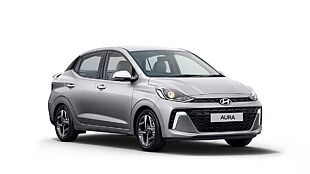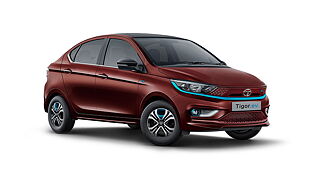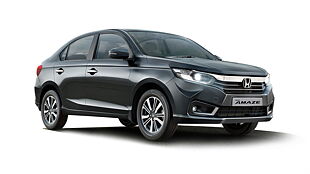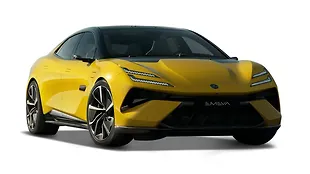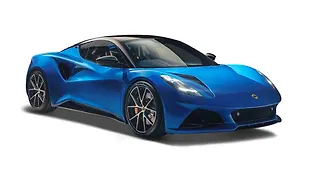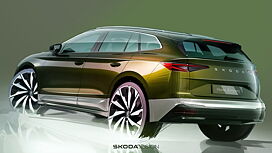Introduction

We wait for an official confirmation from Ford to confirm if the Fiesta Classic sedan has been discounted (looks like it, since the numbers are at all-time low). It makes sense for Ford to bid adieu to the sedan, since the new Figo Aspire is similarly priced and would mean that whatever meagre sales the C-Segment sedan has will soon disappear. For a better perspective on the growing compact sedan segment and to find out the advantages of the new-age cars over the traditional budget sedans, we pit the Figo Aspire against its older sibling, the Fiesta Classic.
Size

The Fiesta Classic is almost a foot longer than the Figo Aspire sedan. The Classic started its career as a C-segment sedan and was eventually pushed down the price range after the launch of the next generation Fiesta in 2011. In terms of aesthetics, the Classic is a better looking car purely because of right proportions. The Figo Aspire has better features like the hexagonal grille, sharp cuts on the body, sweptback headlamps and plenty of chrome, but while all of them look nice they are not a replacement for the basic proportionate dimensions.
Interior

The modern architecture has liberated a lot of space in the Figo Aspire, the cabin is bigger than that of the Classic. Three adults can comfortably sit on the rear bench of the Aspire with sufficient headroom and knee room; this was nearly impossible in the older car. The fit and finish quality and features list has also improved over time. Not only does the car feel better, but also offers more features and utility. The music system sounds better and offers smartphone interface and voice commands. There are also plenty of cubby holes in the Aspire that will hold everything from water bottle to cups to even small size laptops.

Performance

There are no tax benefits for the cars over four metres in length, and that means Ford has nothing to gain by fitting a small petrol engine in the Classic. The 1.6-litre Duratec petrol from the Classic developing 101bhp and 146Nm of torque is a lot more powerful than the 1.2-litre Ti-VCT of the Aspire developing 88bhp and 112Nm. So while the new cars are affordable, the whole breed of powerful naturally aspirated budget petrol cars is disappearing.
The regulations for the diesel engines on the other hand are conducive. The new engine has better torque spread, more power and also much better fuel efficiency.
Ride & Handling

We did not get an opportunity to test both these cars together, but an informed guess will be that the Classic will be better at handling, while the Figo Aspire will be more comfortable. The low centre of gravity and ground clearance, along with the hydraulic steering in the Classic are plus points for spirited driving. The new Aspire, on the other hand, gets electrically assisted steering which does not provide enough feedback. Also the higher ground clearance and larger suspension travel do help in improving the ride quality and drivability over bad roads but they do take a toll on handling.
Safety

Over the years cars in general have become safer. The monocoque chassis of today’s cars are stronger offering more safety to the passengers compared to previous generation cars. Manufacturers have also become sensitive towards safety. Only the top-end variant of the Classic has ABS and airbags; the Aspire on the other hand, gets two airbags even in the base variant. The top-end gets first in segment six airbags apart from ABS-EBD.
Conclusion

Apart from being two generations ahead of the Classic, the Figo Aspire is a sedan specifically developed for the Indian market. Not only is it better from a utility perspective, but will also be easier to live with in terms of ownership cost. What makes the overall proposition even sweeter is the pricing. The Aspire undercuts most of its competition on pricing. Ford is offering a solid product and the pricing shows their commitment to doing well in the Indian market.

![Ford Aspire [2015-2018] Image Ford Aspire [2015-2018] Image](https://imgd.aeplcdn.com/272x153/cw/ec/19421/Ford-Aspire-Right-Front-Three-Quarter-74345.jpg?wm=0&q=80)
![Ford Aspire [2015-2018] Right Front Three Quarter Ford Aspire [2015-2018] Right Front Three Quarter](https://imgd.aeplcdn.com/199x112/cw/ec/19421/Ford-Aspire-Right-Front-Three-Quarter-74345.jpg?v=201711021421&q=80)
![Ford Aspire [2015-2018] Right Front Three Quarter Ford Aspire [2015-2018] Right Front Three Quarter](https://imgd.aeplcdn.com/199x112/cw/ec/19421/Ford-Aspire-Right-Front-Three-Quarter-76260.jpg?v=201711021421&q=80)
![Ford Aspire [2015-2018] Right Rear Three Quarter Ford Aspire [2015-2018] Right Rear Three Quarter](https://imgd.aeplcdn.com/199x112/cw/ec/19421/Ford-Aspire-Right-Rear-Three-Quarter-76273.jpg?v=201711021421&q=80)
![Ford Aspire [2015-2018] Boot Space Ford Aspire [2015-2018] Boot Space](https://imgd.aeplcdn.com/199x112/cw/ec/19421/Ford-Aspire-Boot-Space-76272.jpg?v=201711021421&q=80)
![Ford Aspire [2015-2018] Interior Ford Aspire [2015-2018] Interior](https://imgd.aeplcdn.com/468x263/ec/3b/17/19421/img/ol/Ford-Figo-Aspire-Interior-54271.jpg?v=201711021421&q=80)


